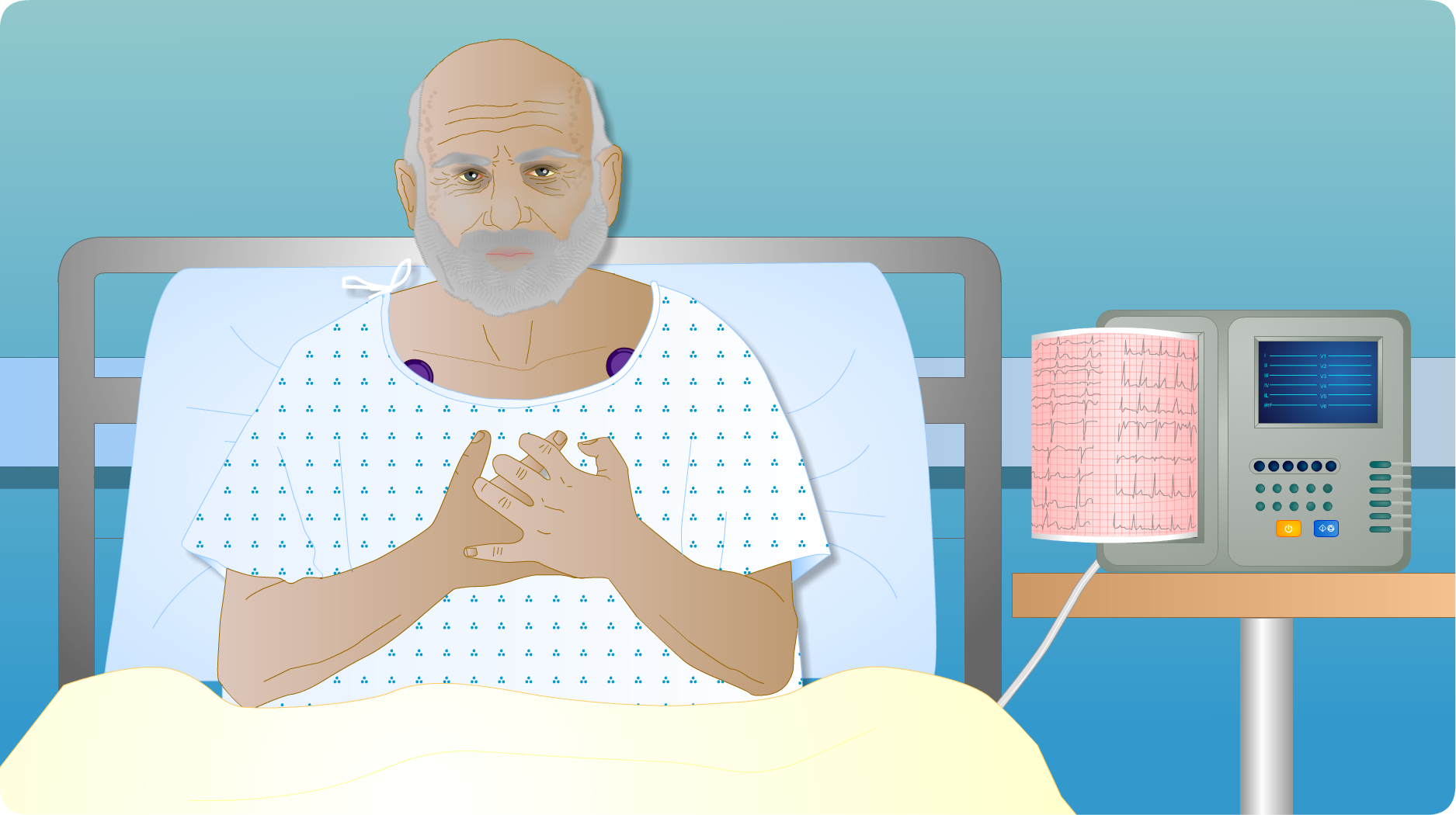Having completed this module the learner should;
- have an understanding of the diagnosis and management of patients who present with symptoms indicative of Acute Coronary Syndrome.
- recognise the benefits for patients and carers of utilising a holistic multidisciplinary approach to care.
- be aware of the resources available to ensure that their practice is evidence based and have knowledge of local workplace procedures and practice.
The following are all secondary prevention strategies that Hamish should be encouraged to address.
Hamish is discharged home. He has been referred to the cardiac rehabilitation service and receives a phone call from the cardiac rehabilitation nurse, Gillian.
There are several key areas that the cardiac nurse Gillian focuses on during her telephone assessment, she uses the SBAR* framework to provide structure and focus to her assessment.
Prior to surgery, Hamish will be seen by the surgeon in order to discuss the operation and potential risks and benefits. The surgeon tells him he will need a number of tests and investigations prior to the operation. In Hamish’s case this will be carried out as an in-patient. However most people follow an elective pathway for cardiac surgery and are admitted from home.
| Pre-assessment requirements for cardiac surgery |
| Assessment |
Rationale |
| Medication |
Changes may be required to medication prior to surgery according to the surgeons preference. |
| Chest X-ray (CXR) and Pulmonary Function Tests (PFT”s) |
CXR is important to identify underlying pathologies or infection prior to surgery. PFT’s are required to assess respiratory function as part of anaesthetic assessment. |
| Blood tests |
A broad range of blood tests are required prior to cardiac surgery in order to establish baseline values preoperatively. Group & Save is included in case blood transfusion is required. |
| Methicillin Resistant Staphylococcus Aureus (MRSA) Screening |
The purpose of screening for MRSA is to identify, manage and reduce risk of transmission of MRSA. Screening may include taking swabs from the nose, throat, axilla, groin or perineum. |
| Urine dipstick |
This forms part of the overall general inpatient assessment. |
| Dental Assessment |
Not a requirement for people awaitibg CABG, although a desirable part of overall good health and essential for those having valve surgery or the correction of congenital defects. |
| Other |
Additional tests may include an ultrasound of the carotid arteries to better inform the risk of stroke and echocardiogram to assess the function of the heart valves and left ventricle. |
Hamish underwent a Coronary Artery Bypass Graft (CABG) and made a good post-operative recovery. Click on Additional Information to see other aspects that may affect Hamish’s recovery.
As his coronary angiogram has shown 3-vessel disease (disease present in three different coronary arteries) Hamish is referred to the cardiothoracic team for assessment for Coronary Artery Bypass Graft (CABG) Surgery.
Hamish is referred for an urgent coronary angiogram to assess the anatomy of his coronary arteries. (you may wish to review the coronary artery anatomy within module 1).
The nurse explains this procedure to Hamish and Flora and gives him a booklet: British Heart Foundation: Coronary Angioplasty
On transfer to CCU Hamish’s chest pain settles and he is reviewed by a cardiologist and starts ACS and anti-anginal treatment. The cardiologist tells Hamish he has had a small heart attack. This is sometimes referred to as a Non ST Elevation Myocardial Infarction (NSTEMI). He explains that he will require further investigations including coronary angiography. He also requires to be commenced on medication.

Hamish develops further chest pain on return to the ward, he is attached to a cardiac monitor and baseline observations are obtained. Hamish is given opiate analgesia (e.g. morphine) for his chest pain after Glyceryl Trinitrate (GTN) spray is not effective.
He is re-assessed by medical staff who note that his Eletrocardiogram (ECG) showed further abnormal changes on the 12-lead ECG. A repeat Troponin is checked and found to be elevated.
Hamish is transferred to Coronary Care Unit (CCU) for further monitoring.
Hamish has remained pain free since admission. His cardiac markers were normal and his systemic observations were stable. Hamish has been referred to the cardiac nurse specialist for further assessment to establish a diagnosis and stratify his risks.
During his Exercise Tolerance Test Hamish experiences chest pain and the test is stopped. During a 5-minute recovery period where Hamish continues to be monitored, his chest pain resolves and he then returns to the ward. See additional information for indications for terminating the ETT test.
On initial assessment by medical staff, clinical history and symptoms are obtained and differential diagnosis excluded (see additional information for differential diagnosis). In accordance with local protocols an initial management plan is initiated and Hamish is referred for chest pain assessment.
Hamish is referred for chest pain assessment.



